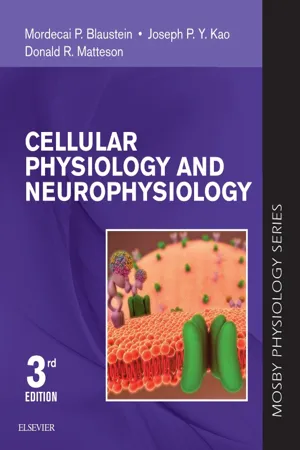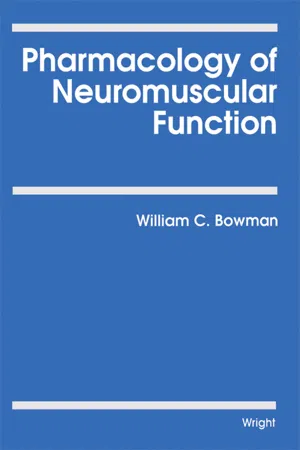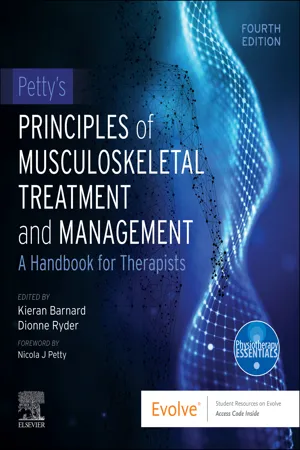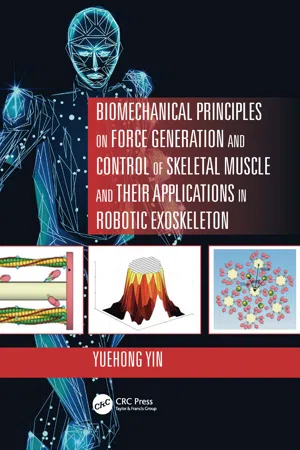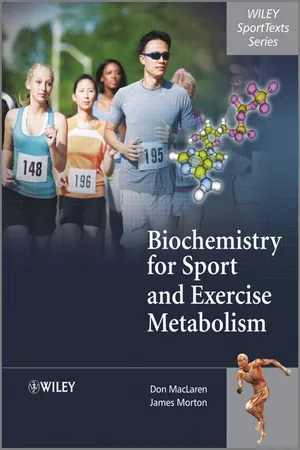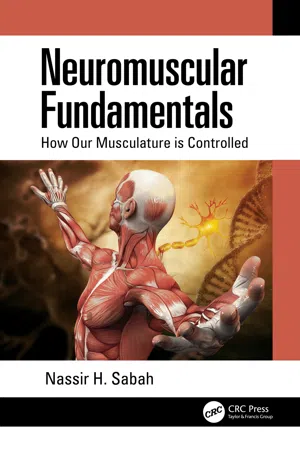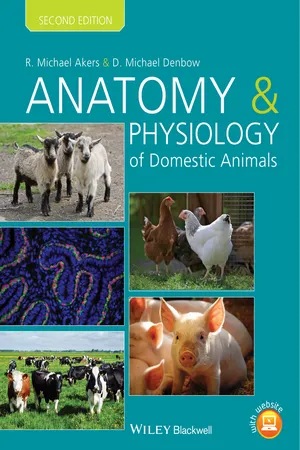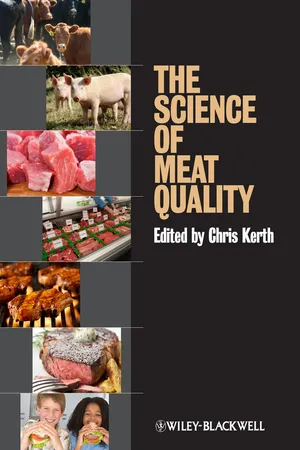Biological Sciences
Muscle Contraction
Muscle contraction is the process by which muscle fibers generate tension and shorten, resulting in movement. This process is controlled by the interaction between actin and myosin filaments within the muscle fibers, which slide past each other to produce the contraction. Muscle contraction is essential for various physiological functions, including movement, posture, and organ function.
Written by Perlego with AI-assistance
Related key terms
Related key terms
1 of 4
Related key terms
1 of 3
10 Key excerpts on "Muscle Contraction"
- eBook - ePub
- Andrey B. Rubin(Author)
- 2017(Publication Date)
- Wiley-Scrivener(Publisher)
Chapter 22 Physics of Muscle Contraction, Actin-Myosin Molecular Motor22.1 General Description of Energy Transformation in Systems of Biological Motility
The moving ability is a characteristic property of living organisms from protozoa to most complex ones. Contraction of skeletal, cardiac and smooth muscles and plant leaf movement, ciliary beating and flagella rotation, cell division and protoplasm movement are diverse types of motility having a common feature — transformation of chemical energy, released upon ATP hydrolysis, into mechanical work. Among linear molecular motors is myosin, moving along actin filaments, as well as kinesin and dinein, moving along microtubules formed by tubulin.Upon Muscle Contraction, the mechanical work is performed by the heads of myosin molecules, arranged in supramolecular structures, when they interact with polymerized actin. The main regulator of the motility in all muscles is calcium. Elucidation of molecular mechanisms for generation of force, transformation of chemical energy of ATP hydrolysis into mechanical work and mechanisms controlling these processes is the chief task of biophysics of biological motility.22.2 Basic Information on Properties of Cross-striated Muscles
Skeletal and cardiac muscles as well as flight muscles in insects are ascribed to cross-striated muscles. A skeletal muscle consists of longitudinal fascicles of muscle fibers. A fiber is a long multinuclear cell with the cross-section from 10 to 100 µm. The fiber length corresponds frequently to the muscle length reaching 12 cm.Mechanics and Energetics of Muscle Contraction. A skeletal muscle starts to offer noticeable resistance to extension only of the length much exceeding its natural value in the organism. In response to electric excitation, this muscle develops an active force and becomes much more rigid. The muscle mechanical response to electric excitation depends on both the stimulating signal and the mechanical restrictions imposed on the muscle. Given the ends of the muscle or fiber fixed, the muscle generates an active force or mechanical tension. Tension is the force per cross-sectional area, i.e. a value having the dimension of pressure. The mode of Muscle Contraction at a constant length is called isometric. Figure 22.1 - eBook - ePub
Cellular Physiology and Neurophysiology E-Book
Cellular Physiology and Neurophysiology E-Book
- Mordecai P. Blaustein, Joseph P. Y. Kao, Donald R. Matteson(Authors)
- 2019(Publication Date)
- Elsevier(Publisher)
SECTION FIVE Physiology of Muscle Contraction Outline- 14. Molecular motors and the mechanism of Muscle Contraction
- 15. Excitation-contraction coupling in muscle
- 16. Mechanics of Muscle Contraction
Passage contains an image
Chapter 14Molecular motors and the mechanism of Muscle Contraction
Objectives- 1. List the common principles that apply to all molecular motors: myosin, kinesin, and dynein.
- 2. Describe the structure of a skeletal muscle cell and the organization of its contractile elements, and compare and contrast this with the structure of cardiac and smooth muscle.
- 3. Describe the sliding filament mechanism of Muscle Contraction.
- 4. Describe the coupling between the mechanical motions of the myosin motor and the steps involved in ATP hydrolysis during cross-bridge cycling.
- 5. Describe how Ca2+ interacts with the regulatory proteins troponin and tropomyosin to activate contraction in skeletal and cardiac muscle.
- 6. Describe how Ca2+ activates contraction in smooth muscle by promoting the phosphorylation of myosin regulatory light chain.
Molecular motors produce movement by converting chemical energy into kinetic energy
Movement is one of the defining characteristics of all living creatures. Motility is an essential feature of many biological activities, such as the beating of cilia and flagella, cell movement, cell division, development and maintenance of cell architecture, and Muscle Contraction, the main topic of this and the next two chapters. Indeed, the normal function of all cells requires the directional transport, within the cell, of numerous substances and organelles, such as vesicles, mitochondria, chromosomes, and macromolecules (e.g., mRNA and protein).The three types of molecular motors are myosin, kinesin, and dynein
All types of cellular motility are driven by molecular motors that produce unidirectional movement along structural elements in the cell. The structural elements are either filaments composed of actin monomers or microtubules, which are polymers of the protein tubulin. Three distinct types of molecular motors that move along these structures have been described: myosin, kinesin, and dynein - eBook - ePub
- William C. Bowman(Author)
- 2013(Publication Date)
- Butterworth-Heinemann(Publisher)
Chapter 7Muscle Contraction
Publisher Summary
This chapter discusses the theory of Muscle Contraction. According the theory of contraction— the sliding filament theory—contraction is the result of the myofilaments sliding over one another, that is, it is a consequence of increased interdigitation of the myofilaments. In a muscle at its relaxed resting length, about two-thirds of the length of each thick filament and about half of that of each thin filament are overlapped. The process of contraction is a consequence of the formation of cross-bridges between the globular heads of the thick myosin filaments and the G actin units of the thin filaments. The cross-bridges are rapidly formed and broken, each detaching itself from one site on the thin filament and reattaching itself to another site further along and so on, with the result that the thin filament slides along the thick filament, like a line of men pulling in a rope hand over hand. Relaxation to the resting muscle length occurs because cross-bridges cease to be formed, allowing the filaments to readjust to the resting degree of interdigitation. Drugs may increase or decrease the contractions of striated muscle by affecting one or more of the processes in the excitation–contraction coupling sequence. The ultimate cause of the altered contractility is usually a change in the rate of Ca release from, in the amount of Ca2+ released from or in the rate of Ca2+ reuptake by, the sarcoplasmic reticulum.Fibre structure
The cytoplasm of a muscle cell or fibre (the sarcoplasm) contains all the usual subcellular organelles, including many nuclei and mitochondria. In addition it contains the longitudinally orientated water-insoluble protein filaments, the myofilaments, that constitute the contractile apparatus and of which there may be as many as 107 - eBook - ePub
- Anna Dee Fails, Christianne Magee(Authors)
- 2018(Publication Date)
- Wiley-Blackwell(Publisher)
Chapter 9 Microscopic Anatomy and Physiology of Muscle- Skeletal Muscle
- Structure
- Excitation, Contraction, and Relaxation
- Strength of Contraction
- Drugs That Affect Skeletal Muscle Function
- Types of Muscle Contraction
- Smooth Muscle
- Structure
- Stress–Relaxation
- Contraction and Relaxation
- Role and Sources of Calcium
- Action Potentials and Slow Waves
- Autonomic Innervation
- Cardiac Muscle
- Excitation and Contraction
- Cardiac Hypertrophy
Learning Objectives
- Define and be able to explain the significance of the bold italic terms in this chapter.
- Compare and contrast the microscopic structure and location of skeletal, smooth, and cardiac muscles.
- Compare and contrast excitation and contraction of skeletal, smooth, and cardiac muscles.
- Compare and contrast autonomic nervous system innervation of skeletal, smooth, and cardiac muscles. Describe the critical role that calcium plays in smooth and skeletal muscle.
- How is ATP replenished in the cell and what is its role in muscle?
- Briefly describe the generation of an action potential in smooth muscle.
The basis for movement in living cells is contractile proteins, which can convert chemical energy into the mechanical energy of tension and motion. Muscle cells are highly specialized for contraction, and their primary constituents are contractile proteins. However, proteins with contractile properties have also been extracted from many other types of cells. For example, such proteins are responsible for the migration of some white blood cells from capillaries into peripheral tissues, for the movements of mitochondria, and for the movement of the cilia on some epithelial cells.Skeletal Muscle
Structure
The skeletal muscle fiber (also called voluntary striated muscle fiber) is actually a long, multinucleated cell with visible striations. Immediately beneath the outer cell membrane (sarcolemma) are numerous nuclei, reflecting the end‐to‐end fusion of shorter primitive muscle cells during development. The interior of the fiber is packed with elongated protein strands (myofibrils), and filling the clefts and spaces between these strands is an extensive network of smooth endoplasmic reticulum (sarcoplasmic reticulum) and associated tubular invaginations of sarcolemma (transverse tubules, or T tubules) (Fig. 9‐1 ). As you have already noticed, many of the structures related to muscle are modified with the affix “sarco” from the Greek word sark - Kieran Barnard, Dionne Ryder(Authors)
- 2023(Publication Date)
- Elsevier(Publisher)
Normal function of the neuromusculoskeletal system requires normal function of muscle, joint and nerve. • muscle strength, power, endurance, motor control and muscle length • simple classification of muscle Anatomy, Biomechanics and Physiology of Muscle Muscle constitutes approximately 40% of the total body weight, depending on the level of muscular development of the individual. A muscle (i.e. muscle and its tendons) can be divided grossly into contractile tissue and noncontractile tissue. Contractile Tissue of Muscle The smallest unit of muscle is the myofibril, made up of thin actin and thick myosin filaments, giving a striated appearance under the microscope (Fig. 4.2). The myosin filaments produce the dark A band, and the actin filaments produce the light I band. In addition, elastic titin filaments lie between the myosin filaments. The titin filaments act like a spring, with increased tension when the sarcomere is lengthened, thus enabling it to return to its resting length when the tension is removed; this is also thought to keep the myosin in the centre of the sarcomere when there is an asymmetrical pull (Horowits et al., 1989). The Z line demarcates the sarcomere, which is the basic contractile unit of muscle. Individual muscle fibres (or cells) are covered in a membrane, called the sarcolemma, and by a connective tissue sheath called the endomysium (Fig. 4.3). Individual muscle fibres are collected into bundles (or fascicles) by a connective tissue sheath called the perimysium. Numbers of muscle bundles constitute the muscle and are surrounded by a connective tissue sheath called the epimysium and by an outer layer of fascia- Yuehong Yin(Author)
- 2019(Publication Date)
- CRC Press(Publisher)
1 Force Generation Mechanism of Skeletal Muscle Contraction In a narrow sense, the aim of studies on the mechanism of force generation of skeletal muscle is to give theoretical explanations to the dynamic characteristics and phenomena of muscular contraction and to promote the relevant experimental researches in an iterative way of verification and correction. In a broad sense, it aims to provide theoretical guidance to practical applications in the fields such as biomechanics and biomedicine, including diagnosis and evaluation of muscle diseases, human–machine integrated coordinated control of exoskeleton robots, dynamic modeling of human motion, bionic design of artificial muscle and humanoid robot, etc. Thus, there are both great theoretical significance and wide application foreground concerning the study of force generation mechanism of skeletal muscle. In this field, the earliest breakthroughs were made by Hill [ 1 ] and Huxley [ 2 ], both of them Nobelists. Their work laid the foundation for the study on mechanism of muscular contraction. Recently, with the development of micro/nano technology and single-molecule manipulation technique, deeper understandings were achieved about the microscopic mechanism of skeletal Muscle Contraction. Physiology, physical chemistry, molecular biology, statistical thermodynamics, cybernetics, nonlinear mathematics, etc., are all involved in the study of force generation mechanism of skeletal muscle, which is typical interdisciplinary research. In consequence, both the degrees of complexity and difficulty are very high, resulting in theoretical and technical challenges. In this chapter, the morphological structure of skeletal muscle under various scales is introduced first. On that basis, the biomechanical principle of muscular contraction, i.e., the excitation–contraction coupling (ECC) process, is systematically illustrated- eBook - ePub
- Donald MacLaren, James Morton(Authors)
- 2011(Publication Date)
- Wiley(Publisher)
Figure 2.15 . This relationship dictates that the absolute force produced during contraction is greatest at slow, concentric speeds. In other words, the speed of contraction (i.e. movement) is greatest at low workloads—a relationship which is true for both slow and fast twitch fibres. Indeed, it is easy to flex your biceps muscle quickly when no dumbbell is in your hand, compared to when you are holding a 20 kg dumbbell!Figure 2.15 Force-velocity relationship during skeletal Muscle ContractionGiven that most sporting events require the development of power (a product of force × velocity), it follows that there is a trade-off between training with the optimal load and velocity in order to develop the power-generating capacity of the muscle.2.4.6 Muscle FatigueOne of the most highly research areas within the sport and exercise sciences are the mechanisms by which muscles become fatigued during exercise. Fatigue can be most simply defined as an inability to maintain a given force or power output during repeated Muscle Contractions .Though relatively straightforward in definition, actually undertaking research to ascertain the underlying physiology and biochemistry underpinning exercise-induced fatigue has proved a major challenge for exercise scientists (see Allen et al ., 2008 for an excellent review). Furthermore, much of this research has also been conducted in animal models using isolated single fibres. While such approaches have proved insightful in terms of elucidating potential detailed biochemical mechanisms of fatigue, it is likely that the findings produced are not entirely relevant to the exercising human performing whole-body exercise.Despite the uncertainty surrounding this area, two general theories of fatigue have emerged. The first describes central fatigue , meaning that the processes underpinning the decline in force are due to disturbances at the level above the NMJ. Alternatively, the cause of fatigue could be peripheral in location (i.e. peripheral fatigue ), due to metabolic disturbances below the NMJ and in the muscle itself (refer back to Figure 2.7 - eBook - ePub
Neuromuscular Fundamentals
How Our Musculature is Controlled
- Nassir H. Sabah(Author)
- 2020(Publication Date)
- CRC Press(Publisher)
sliding filament model of contraction.- 2. The myofibrils are attached to the sarcolemma at Z disks and at the ends of the muscle fiber. Hence, when the myofibrils shorten so does the muscle fiber. The contraction-relaxation sequence of a muscle fiber in response to a single AP is a twitch . The tension developed is transmitted to the muscle ends via the connective tissue and tendons. However, the tension appearing at the ends of a muscle is only a fraction of the maximum tension that the muscle fibers are capable of developing because of the viscoelastic properties of the muscle and the short duration of the active state, as will be explained in Section 10.2.
- 3. Both ATP and Mg2+ are required for muscle relaxation. A deficiency of Mg2+ leaves the myosin heads bound to actin molecules, resulting in muscle cramps and pain. Following death, ATP production ceases. Ca2+ flow down their electrochemical potential gradient from the terminal cisternae and the extracellular fluid into the sarcoplasm, where they accumulate in the absence of extrusion by the Ca2+ -ATPase pump. The myosin heads bind to actin; but without ATP, the bond is not broken, resulting in muscle rigidity referred to as rigor mortis .
- 4. The swiveling of the cross bridge is a fast process that may take less than 1 ms.
- 5. There are at least two important reasons for the elaborate T tubule/triad system. First, it speeds up contraction by reducing the diffusion distance for Ca2+ . In the absence of the Ca2+ stores in the terminal cisternae, it would take Ca2+ a few tens of milliseconds to diffuse from the extracellular fluid to the troponin binding sites of the sarcomeres. The triad system brings the Ca2+ stores to within a fraction of a micrometer from the binding sites, thereby reducing the diffusion time to less than a few milliseconds or so. Second, it aids in the synchronization of contraction of all the sarcomeres in a muscle fiber by bringing the AP to the triads, thereby synchronizing the release of Ca2+
- eBook - ePub
- R. Michael Akers, D. Michael Denbow(Authors)
- 2013(Publication Date)
- Wiley-Blackwell(Publisher)
7 Muscular tissueContentsMuscle Tissue OverviewIntroduction Properties of Muscles Functions of MusclesSkeletal MuscleConnective Tissues Blood Vessels and Nerves Skeletal Muscle Fibers Myofibrils Sarcoplasmic Reticulum SarcomeresContraction of Skeletal MuscleNeuromuscular Junction Pharmacology of the Neuromuscular Junction Excitation-Contraction Coupling Sliding Filament Theory Rigor Mortis Summary of Skeletal Muscle Contraction Length–Tension Relationships A Muscle Twitch Treppe Summation Muscle Tone Isometric versus Isotonic Contraction Muscle Relaxation or Return to Resting LengthMetabolism of Skeletal MuscleAerobic Mechanism Creatine Phosphate Anaerobic Mechanism Muscle Fatigue and Oxygen Consumption Heat Production Types of Muscle Fibers Effects of Exercise on MusclesCardiac MuscleCardiac versus Skeletal Muscle Cells Functional CharacteristicsSmooth MuscleStructure Types of Smooth Muscle Neural Innervation of Smooth Muscle Contraction of Smooth MuscleMuscle SystemNaming Muscles Arrangements of Fascicles Muscles as Levers Muscle TerminologyMajor Skeletal MusclesChapter SummaryMuscles of the Head and Neck Muscles of the Pectoral Limb and Lateral Thorax Muscles of the Pelvic Limb and Body Wall Stay Apparatus of a HorseMuscle tissue overview
Introduction
Muscle tissue is specialized for contraction and is responsible for body movements and changes in size and shape of internal organs. Muscle cells are usually elongated and arranged in parallel arrays.Muscle is classified based on the appearance of its cells. The two principal types of muscle include striated and smooth muscle . Striated muscle appears to have cross striations when viewed under the light microscope, whereas smooth muscle lacks such striations. Striated muscle can be further subdivided into two types: skeletal muscle that is attached to bone and responsible for the movements of the axial and appendicular skeleton, and cardiac muscle that makes up the majority of the heart. Skeletal muscle and cardiac muscle are sometimes referred to as voluntary striated and involuntary striated muscles - eBook - ePub
- Chris R. Kerth, Chris R. Kerth(Authors)
- 2013(Publication Date)
- Wiley-Blackwell(Publisher)
4 Muscle Metabolism and Contraction Chris R. Kerth IntroductionWhile we are concerned with quality of meat as a food, it is vitally important that we understand the basic functions of metabolism as it pertains to the muscle. The use of chemical energy in the form of adenosine tri-phosphate (ATP) to convert to mechanical energy (contraction) is the basic function of muscle in the live animal. As we will discuss in later chapters, the process of rigor centers around the process of contraction and most importantly what happens when the muscle no longer has ATP for muscle function. In this chapter we will review the basic concepts of the generation of ATP in the muscle and the unique way in which this influences muscle tissue. We will also discuss, in detail, the steps in Muscle Contraction, paying close attention to those steps that require ATP.MetabolismThe concept of metabolism in the muscle is much like metabolism in other tissues in the body. Substrates like sugars, proteins, or fats are transported to a tissue cell, across the cell wall and then utilized within the cell to convert to ATP, the basic energy source for carrying out basic cellular functions. As we know, basic metabolism falls into one of the two very basic types: glycolysis or oxidative phosphorylation (the TCA or Kreb's cycle). We will briefly review each of these processes, but further details of the evolution of metabolic pathways can be found in Baldwin and Krebs (1981).GlycolysisThe generation of ATP from sugar is done through the glycolytic pathway (see Fothergill-Gilmore and Michels, 1993 for an in-depth review). Muscle cells have the ability to stockpile a small amount of glucose in the form of glycogen. Unlike other types of metabolism, glycolysis takes place in the extracellular fluid or sarcoplasm where glycolytic enzymes are present to take the substrate through each step. The initial steps of glycolysis converts one 6-carbon molecule of glucose into two 3-carbon molecules of glyceraldehyde 3-phosphate (G3P). This requires the utilization of two ATP. The final steps convert each G3P to pyruvate, yielding two ATP for each G3P. Therefore, glycolysis alone generates a total of four ATP and uses two ATP resulting in a net production of two ATP.
Index pages curate the most relevant extracts from our library of academic textbooks. They’ve been created using an in-house natural language model (NLM), each adding context and meaning to key research topics.
Explore more topic indexes
Explore more topic indexes
1 of 6
Explore more topic indexes
1 of 4

